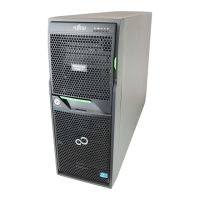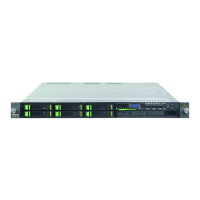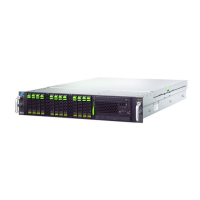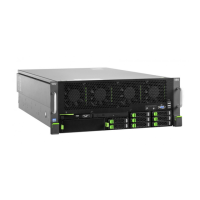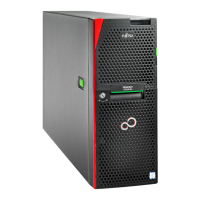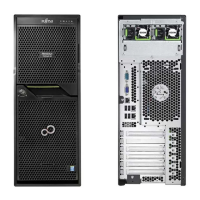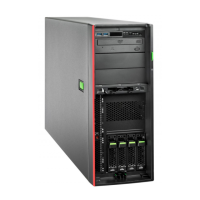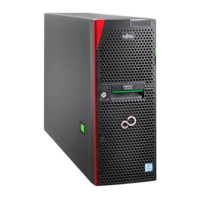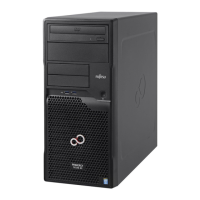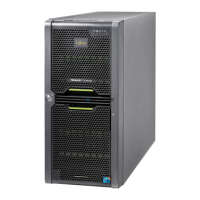
Do you have a question about the Fujitsu PRIMERGY TX200 S6 and is the answer not in the manual?
Describes the manual's purpose, intended audience, and required prior knowledge for server installation and operation.
Lists other relevant PRIMERGY TX200 S6 documentation and resources available for detailed information.
Details the key features and capabilities of the PRIMERGY TX200 S6 server, including Customer Self Service (CSS).
Explains the typographical conventions, symbols, and warnings used throughout the manual for clarity.
Provides essential electrical, mechanical, environmental, and compliance specifications for the server.
Outlines critical safety precautions for installing, operating, and maintaining the server to prevent injury or damage.
Details compliance with ENERGY STAR specifications and notes on energy consumption management.
States compliance with relevant EC directives for Electromagnetic Compatibility and Low Voltage.
Provides information regarding FCC and ICES compliance for Class A digital devices and potential interference.
Gives essential safety guidelines for safely moving and handling the server during transport.
Covers safety and procedural notes for securely installing the server into a rack system.
Discusses the product's environmentally friendly design, energy saving, packaging, and disposal.
Provides instructions and safety precautions for safely unpacking the server and verifying its contents.
Guides on how to set up the server in its floorstand configuration, including safety and environmental considerations.
Details the requirements and procedures for installing and removing the server in standard and third-party racks.
Identifies and explains the standard connectors on the server for attaching external devices.
Explains how to safely connect the server's power supply unit(s) to the electrical mains.
Provides essential safety guidelines and procedures for connecting and disconnecting various cables.
Describes how to access the server's drive bays and covers for the floorstand configuration.
Details the front and rear server controls, buttons, LEDs, and indicators for status monitoring.
Explains the procedures for powering the server on and off, including first-time startup and alternative methods.
Provides information on configuring onboard SATA controllers and SAS/SATA RAID controllers.
Outlines safe procedures and precautions for cleaning the server's exterior and components.
Explains how to use BIOS Setup security options to protect system data from unauthorized access.
Provides troubleshooting steps for when the server's power-on indicator does not light up.
Offers solutions for issues where the server unexpectedly powers down, often related to management errors.
Guides on troubleshooting display issues, including blank screens or incorrect monitor settings.
Addresses problems with flickering or distorted display signals on the monitor screen.
Helps resolve issues of no video output or unstable display, often due to frequency or resolution mismatches.
Troubleshoots incorrect system date and time settings, suggesting BIOS or battery checks.
Diagnoses issues where hard drives are reported as faulty upon system startup, often linked to RAID configuration.
Provides solutions for new drives incorrectly identified as defective, usually related to RAID configuration.
Explains how to interpret and resolve error messages displayed on the screen by referring to documentation.
Details handling and replacement of hot-plug components like power supplies and HDDs during operation.
Explains how to identify and replace non-hot-plug components such as memory modules and fans.
Lists the specifications for the system board, including type and chipset.
Details the processor quantity and type supported by the server.
Outlines memory slot details, type, capacity, protection, and notes for the server.
Specifies the available interfaces, including USB, graphics, serial, and LAN connectors.


